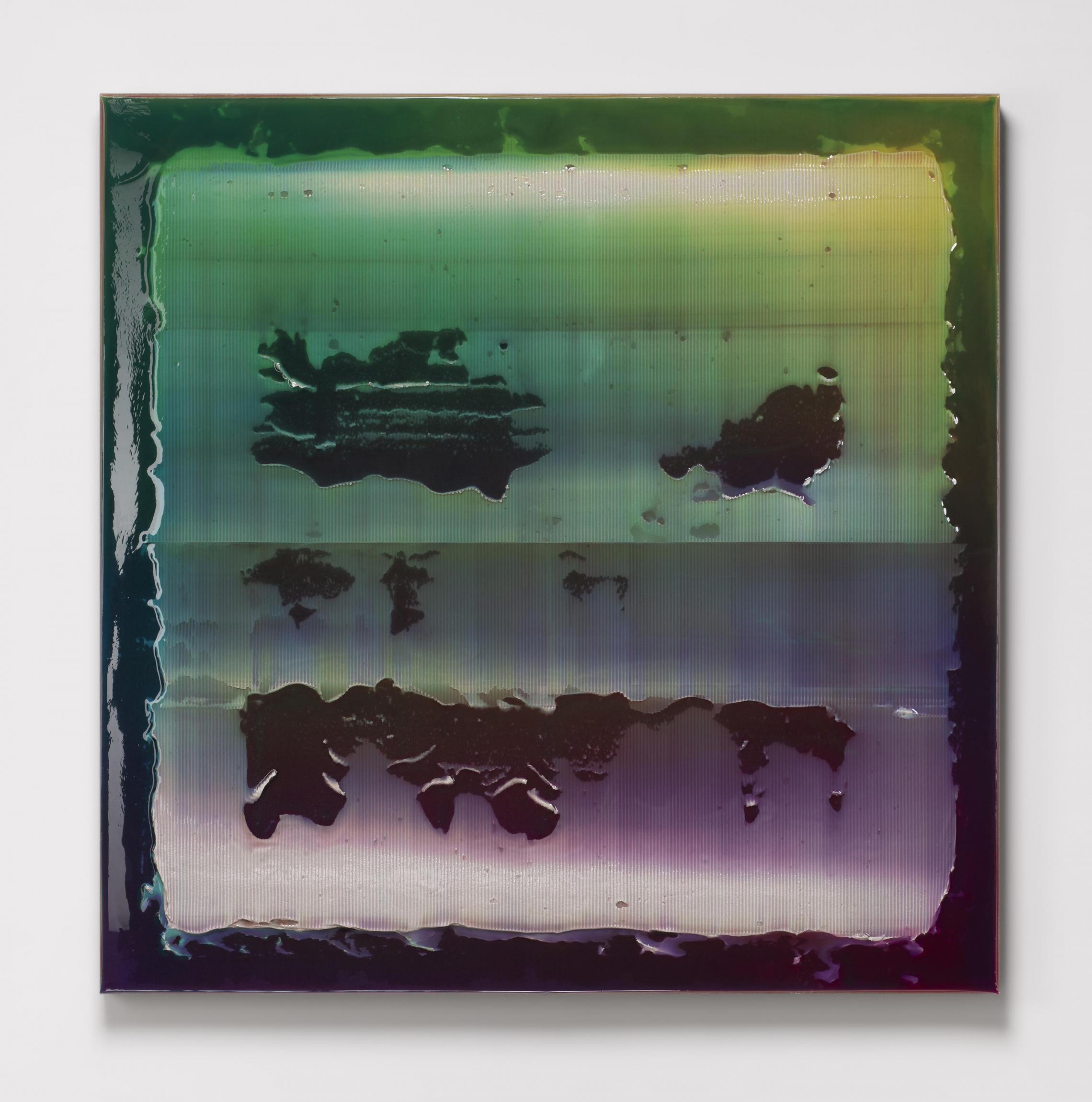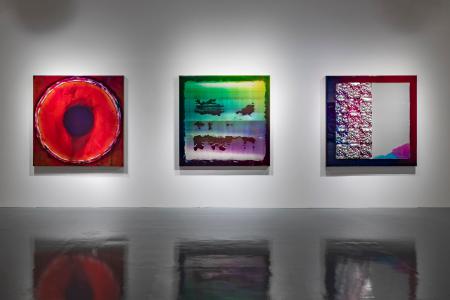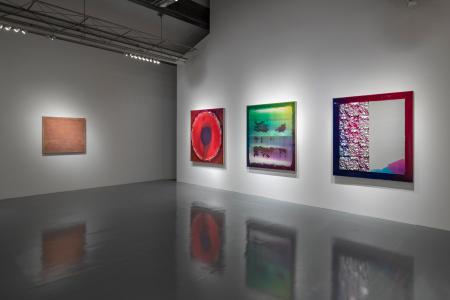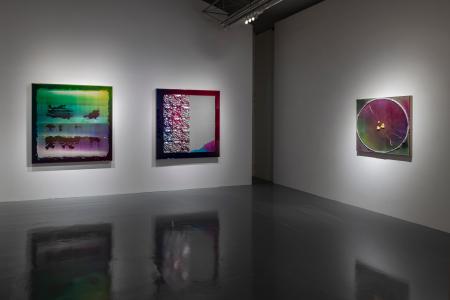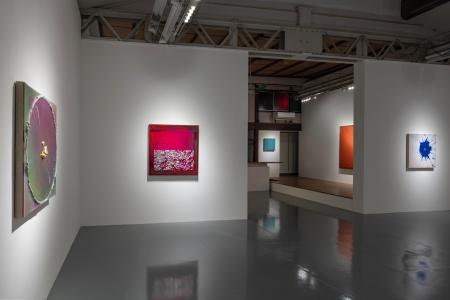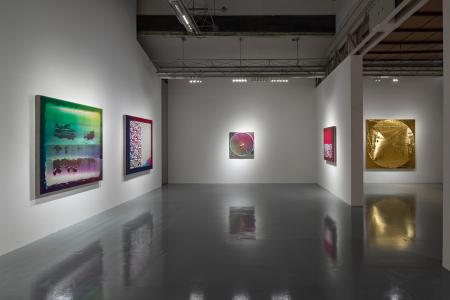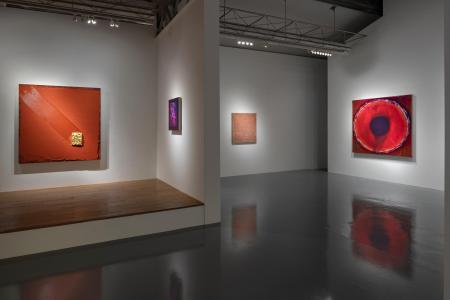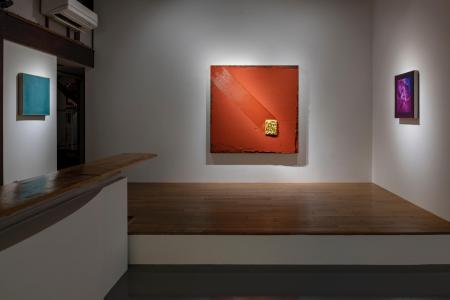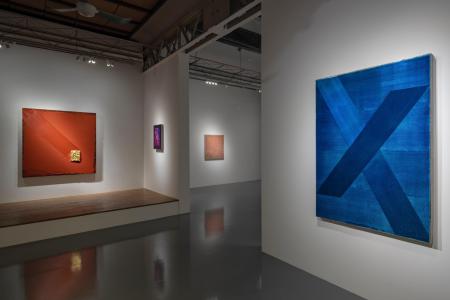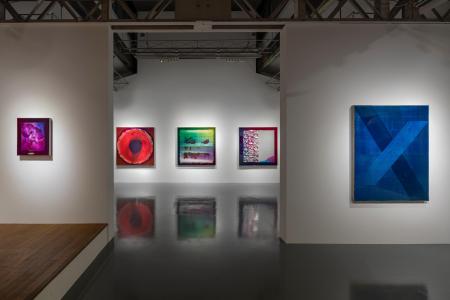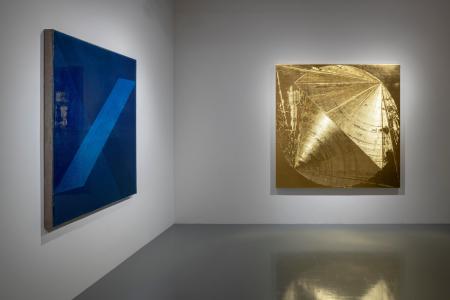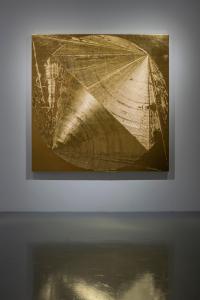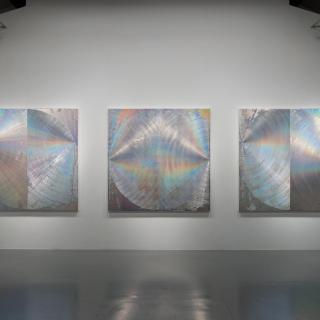Daisuke Ohba
"Painting—Phenomena in Degrees of Depth"
From repetitive grid patterns to an ethereal, mist-shrouded pine forest, the paintings by Daisuke Oba hover across the real and the illusory, establishing a pictorial field in-between as another world dimension. In Ohba’s recent hologram paintings—his signature style since 2015, canvas images are bathed in light, which radiate color diffused in all directions, suggesting the multidimensionality of pictorial space. His fourth solo exhibition with the gallery since 2017 showcases a new body of paintings where light rays reach a bed of translucent acrylic paint. Informing the audience of mythological narratives, Ohba signifies a metaphorical worldview that seeks to span from the depth of oceans to the height of skies.
The first half of the exhibition—pointing to the celestial world—begins with a painting using a molded cast of Archaeopteryx, a bird-like dinosaur and an ancestral genus of all living birds. A series of paintings in transparent crimson color, “Crystal Matter” (2019),abstracts a dinosaur fossil from Jurassic limestone, which is deployed as a metaphor for soaring through space and time. The surface of Untitled (2020) is layered in red ochre paint reminiscent of an ancient mural, and holds a natural ore with gold leaf overlay, which slides diagonally across the canvas as if falling from the sky. The shimmering glow of gold that has fascinated mankind since antiquity, deep-blue glitters of Lapis lazuli, and soil-like texture and rhythm brought to the pictorial space through the linear composition dissects the color plane—all rest on a bold rendition of the universe, like a science fiction story. This assertive demand for a myth creation that summons up narratives from the East and West forecasts a new direction in Ohba's work.
Guiding the audience into the depth of the liquid material, the second half of the exhibition reveals a seductive world similar to a freshwater swamp, where layers of deep, faintly muddy colors are illuminated by sunlight. In “Coral Painting" (2019-), the artist sprays natural coral powder—a pigment used in Nihonga, a genre of Japanese paintings from 1900 onward—suggesting the sea currents underneath. The three primary colors of cyan, magenta, and yellow are poured in layers, radiating intense aspects like bacteria dispersing from white light into a prism of rainbow hues (Untitled, 2019). The weight of the chroma is altered by the grooves and slopes in the base layer of the painting, creating the illusion of the image sinking towards the bottom of the water. The same technique is repeated in his latest work Untitled (2020), in which the canvas holds blocks of natural ores coated with platinum foil. The ore, with a myriad of angled facets, creates an aggregate of diffused reflections. Just as mountains or islands seemingly float atop the sea, these elements rest on a layer of transparent acrylic paint which creates a complex relationship of light and form.
Light travels to reveal the depth of phenomena. Referencing mythological episodes that appear behind the painting, Ohba guides the audience beyond the abstract world in a quest for discovering the wonder and experience of vision. Paintings—accumulations of physical layers of materials—are taken to expanded interpretation to include meaning as a process of his creation. Painting, as Ohba has expressed, is “a world in which we structure various phenomena that occur in front us, free from one-directional time axis of the past, the present, and the future”. In the face of unprecedented events and while our consciousness undergoes a profound change, the exhibition attempts to reimagine a world of meaning and to make sense of it through our own perceptions—in this case, conjured as a spectacle of genesis in a form of paintings.
